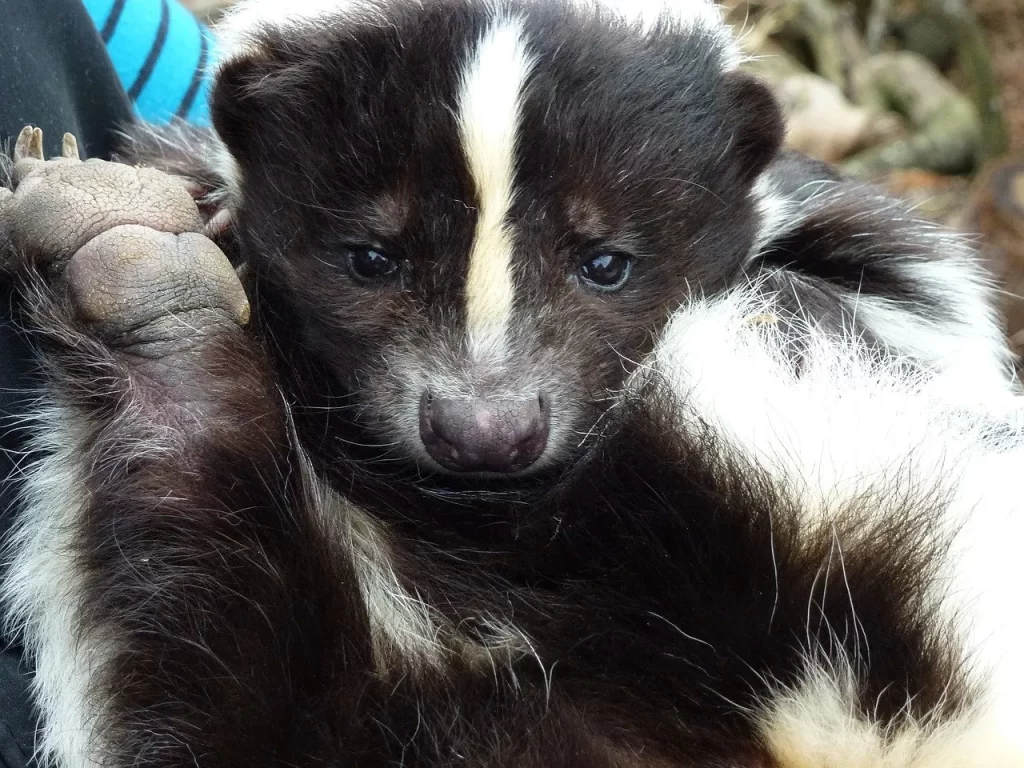What Does Skunk Smell Like? A Comprehensive Guide
Skunks are well-known for their distinctive and pungent odor, which they use as a defense mechanism against predators. The smell is often described as one of the most offensive in the animal kingdom, and it can linger for a long time. Understanding what skunk smell is like, its chemical composition, and how to deal with it can be beneficial for those who live in areas where skunks are common. This article will delve into the nature of skunk odor, its effects, and how to manage encounters with these creatures.
Table of Contents
- Introduction
- Understanding Skunk Odor
- 2.1. Chemical Composition
- 2.2. How Skunks Spray
- Describing the Smell
- 3.1. Common Descriptions
- 3.2. Comparisons to Other Odors
- Effects of Skunk Spray
- 4.1. Impact on Humans
- 4.2. Impact on Pets
- What to Do If You Encounter a Skunk
- 5.1. Preventing Skunk Encounters
- 5.2. Dealing with a Skunk Spray Incident
- Removing Skunk Odor
- 6.1. Home Remedies
- 6.2. Commercial Products
- Skunks in the Ecosystem
- FAQs
- Conclusion
- References
Introduction
Skunks are small to medium-sized mammals belonging to the family Mephitidae. They are primarily found in the Americas and are recognized for their black and white coloration and their ability to spray a foul-smelling liquid. This article aims to provide a thorough understanding of what skunk smell is like, how it affects those who come into contact with it, and what steps can be taken to mitigate its effects.
Understanding Skunk Odor
2.1. Chemical Composition
The smell of skunk spray is primarily due to a group of sulfur-containing compounds known as thiols. These compounds are responsible for the strong, offensive odor that skunks emit when threatened. The main components of skunk spray include:
- Butyl Mercaptan: This compound has a strong, unpleasant odor similar to rotten eggs or decaying matter.
- Methyl Mercaptan: Another thiol that contributes to the foul smell.
- Dimethyl Sulfide: This compound adds to the complexity of the odor and is often associated with a sweet, yet unpleasant scent.
The combination of these chemicals makes skunk spray one of the most recognizable and enduring odors in nature.
2.2. How Skunks Spray
Skunks have specialized glands located near their anus that store the noxious liquid. When threatened, skunks can spray this liquid with remarkable accuracy, targeting potential predators. They can spray up to 15 feet away, and the smell can be detected from a mile away.The act of spraying is a last resort; skunks usually display warning behaviors, such as hissing, stomping, and raising their tails, before resorting to this defense mechanism.
Describing the Smell
3.1. Common Descriptions
The smell of skunk spray is often described as:
- Rotten Eggs: A sulfur-like odor that is immediately recognizable.
- Burning Rubber: A harsh, acrid scent that can be overwhelming.
- Garlic: Some people compare the smell to that of garlic, particularly when it lingers.
- Chemical: A sharp, pungent odor that can cause irritation to the eyes and throat.
3.2. Comparisons to Other Odors
Many people compare skunk odor to other unpleasant smells, such as:
- Sewage: The strong, putrid smell can be reminiscent of sewage or decaying organic matter.
- Natural Gas: While natural gas is odorless, an odorant is added to it that resembles skunk smell, making it easier to detect leaks.
Effects of Skunk Spray
4.1. Impact on Humans
When humans are sprayed by a skunk, they may experience:
- Irritation: The spray can cause temporary burning and irritation to the eyes, skin, and respiratory system.
- Nausea: The overwhelming smell can lead to feelings of nausea and discomfort.
- Lingering Odor: The smell can cling to clothing, hair, and skin, making it difficult to eliminate.
4.2. Impact on Pets
Pets, particularly dogs, are often the victims of skunk spray. The effects on pets can include:
- Eye Irritation: If a dog is sprayed in the face, it may experience redness, tearing, and temporary blindness.
- Vomiting: Ingesting or licking the spray can lead to gastrointestinal distress.
- Behavioral Changes: Pets may become anxious or fearful after an encounter with a skunk.
What to Do If You Encounter a Skunk
5.1. Preventing Skunk Encounters
To minimize the chances of encountering a skunk:
- Secure Garbage: Keep trash cans tightly closed and secure to prevent attracting skunks.
- Remove Food Sources: Do not leave pet food outside and clean up fallen fruit from trees.
- Seal Entry Points: Block access to areas where skunks might seek shelter, such as under decks or in sheds.
5.2. Dealing with a Skunk Spray Incident
If you or your pet gets sprayed by a skunk, follow these steps:
- Stay Calm: Avoid panicking, as this can worsen the situation.
- Avoid Touching Your Face: Do not rub your eyes or touch your face until you have washed your hands.
- Decontaminate: Use a mixture of hydrogen peroxide, baking soda, and dish soap to wash the affected areas:
- 1 quart of 3% hydrogen peroxide
- 1/4 cup of baking soda
- 1 teaspoon of dish soap
- Rinse Thoroughly: After applying the mixture, rinse thoroughly with water.
Removing Skunk Odor
6.1. Home Remedies
Several home remedies can help neutralize skunk odor:
- Tomato Juice: Contrary to popular belief, tomato juice is not effective at removing skunk odor but can mask it temporarily.
- Vinegar: A solution of vinegar and water can help neutralize odors.
- Baking Soda: Sprinkling baking soda on affected areas can absorb odors.
6.2. Commercial Products
There are also commercial products specifically designed to neutralize skunk odor. Look for enzymatic cleaners or odor neutralizers that can effectively eliminate the smell.
Skunks in the Ecosystem
Skunks play an essential role in their ecosystems. They are omnivores and help control insect populations by feeding on pests such as beetles, wasps, and crickets. Additionally, skunks consume carrion, which helps to clean up the environment. Understanding their role in the ecosystem can foster a greater appreciation for these often-misunderstood creatures.
FAQs
What does skunk smell like?
Skunk smell is often described as a combination of rotten eggs, burning rubber, and garlic. It is a pungent, sulfurous odor that can be overwhelming.
How far can a skunk spray reach?
Skunks can spray their noxious liquid accurately up to 15 feet, and the smell can be detected from a mile away.
Is skunk spray harmful to humans?
While skunk spray is primarily an irritant, it can cause temporary burning and irritation to the eyes, skin, and respiratory system. It is not typically harmful but can be unpleasant.
How can I remove skunk odor from my pet?
To remove skunk odor from a pet, use a mixture of hydrogen peroxide, baking soda, and dish soap, then rinse thoroughly with water.
What should I do if I smell skunk in my area?
If you smell skunk in your area, it is essential to identify the source. If it is a gas leak, evacuate the area and contact your gas supplier immediately. If it is a skunk, take precautions to avoid encounters.
Conclusion
The smell of skunk is one of the most distinctive and potent odors in nature. Understanding what skunk smell is like, its effects, and how to manage encounters with these creatures can help individuals navigate situations involving skunks more effectively. By taking preventative measures and knowing how to respond to skunk spray incidents, you can minimize the impact of their odor and continue to enjoy the outdoors.
References
For more information on skunks and their characteristics, you can visit the Wikipedia page on Skunks.



